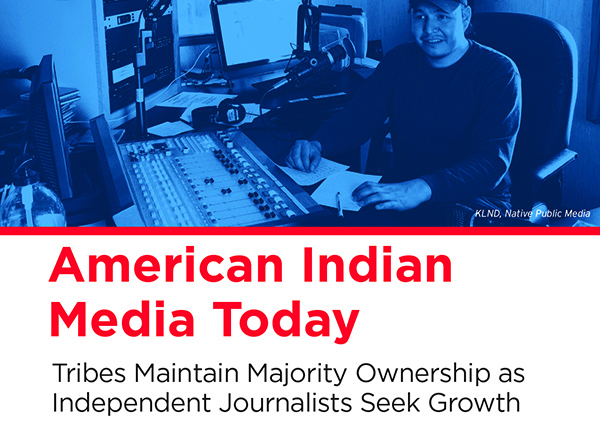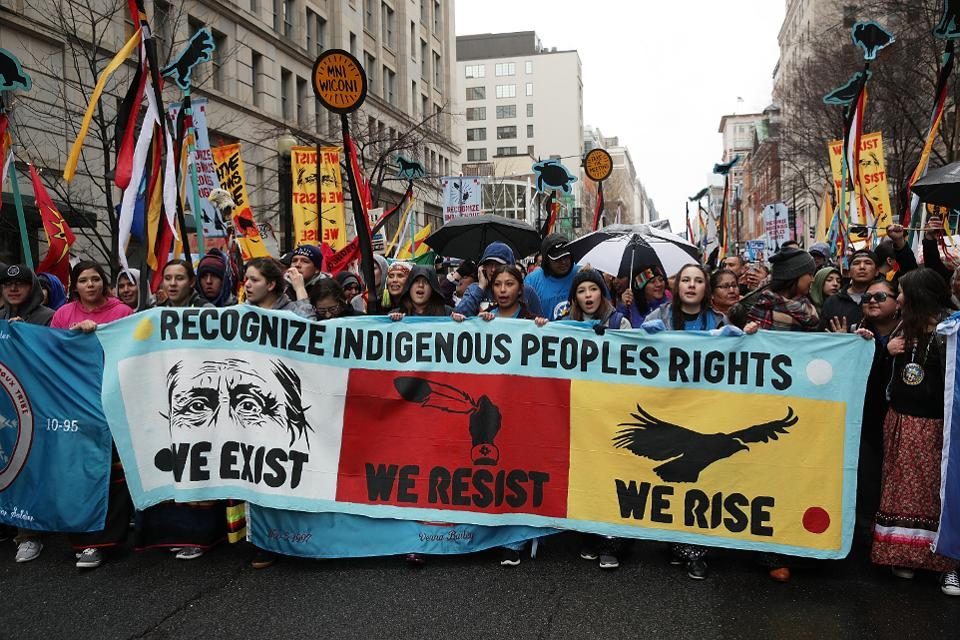
Guardians of the Narrative: Native American Tribal Journalism and the Quest for Media Sovereignty
In the cacophony of modern media, where narratives are often shaped by distant, disengaged voices, Native American tribal journalism stands as a crucial, often unsung, bulwark against erasure and misrepresentation. Far more than mere conveyors of facts, these Indigenous news sources are vital institutions of cultural preservation, community building, and political self-determination, embodying the profound concept of media sovereignty. This isn’t merely about reporting the news; it is about reclaiming the narrative, ensuring the voices and perspectives of Indigenous peoples are heard, understood, and respected, first and foremost by their own communities, and then by the wider world.
The roots of Native American journalism stretch back further than many realize, challenging the popular misconception of Indigenous societies as lacking sophisticated communication methods. The birth of the Cherokee Phoenix in 1828, a bilingual newspaper printed in English and the Cherokee syllabary developed by Sequoyah, marks a pivotal moment. Edited by Elias Boudinot, its primary mission was to advocate against the forced removal of the Cherokee Nation from their ancestral lands. It was a powerful instrument of resistance, demonstrating Indigenous intellectual prowess and political sophistication, directly confronting the prevailing dehumanizing narratives of the time. This pioneering effort established a precedent: Indigenous media would serve as a voice for self-determination, a tool to counter colonial narratives, and a means to unite and inform their own people.
For centuries following the Cherokee Phoenix, mainstream American media largely failed Indigenous communities. Coverage was either non-existent, sensationalized, or steeped in harmful stereotypes – depicting Native peoples as relics of the past, noble savages, or obstacles to "progress." This pervasive pattern of misrepresentation contributed significantly to the systemic racism and marginalization faced by Indigenous populations. It created a void, a desperate need for authentic voices to report on issues critical to tribal nations, from treaty rights and land disputes to cultural revitalization and health crises, all from an Indigenous perspective.
This is where contemporary tribal journalism steps in. It functions on multiple, interconnected levels. Internally, it is the lifeblood of community. Tribal newspapers, radio stations, and online platforms report on local council meetings, school events, language immersion programs, traditional ceremonies, and the achievements of community members. They foster a sense of belonging, preserve cultural knowledge, and reinforce tribal identity. As Elias Boudinot understood, a shared information base is fundamental to a cohesive and empowered nation.
Externally, Indigenous news sources are crucial for holding tribal governments accountable, a cornerstone of any healthy democracy. While tribal governments are sovereign entities, they are not immune to scrutiny, and an independent press plays a vital role in ensuring transparency and ethical governance. This can be a challenging space, as many tribal news outlets rely on tribal funding, creating potential for conflicts of interest or pressure to self-censor. However, organizations like the Native American Journalists Association (NAJA) vigorously advocate for press freedom within tribal nations, emphasizing that a free and independent press is essential for true sovereignty.
.png)
The concept of "media sovereignty" is at the heart of this movement. It is the inherent right of Indigenous nations to control their own narratives, to define themselves, and to communicate on their own terms, free from external editorial control or cultural filters. It’s an extension of political and cultural sovereignty, recognizing that true self-determination requires the ability to shape public discourse, both within and outside the community. As Indigenous media scholars often emphasize, it’s about shifting from being the object of media coverage to being the subject and creator of their own stories. This means not just what is reported, but how it is reported – utilizing Indigenous epistemologies, storytelling traditions, and cultural frameworks that may differ significantly from Western journalistic norms.
The challenges facing tribal journalism are substantial. Funding is a perpetual struggle. Many outlets operate on shoestring budgets, often relying on a mix of tribal government allocations, grants, and limited advertising revenue. This financial precariousness can make it difficult to attract and retain skilled journalists, invest in modern equipment, or expand coverage. The digital divide further complicates matters; while many tribal communities are embracing online platforms, remote reservations often lack reliable, high-speed internet access, limiting reach and engagement.
Moreover, the battle against external misrepresentation continues. Despite increased awareness, mainstream media still often overlooks or mischaracterizes Indigenous issues. When Native stories do break through, they are frequently framed through a non-Indigenous lens, missing crucial context or perpetuating stereotypes. This makes the independent work of tribal journalists even more critical, as they serve as authoritative sources and correctives to external inaccuracies.
Yet, despite these hurdles, tribal journalism is thriving and adapting. Many outlets have embraced digital platforms, creating vibrant websites, podcasts, and social media presences that reach wider audiences, including the growing urban Indigenous population and younger generations. They cover a vast array of topics: groundbreaking environmental activism, struggles for land back and resource protection, the revitalization of endangered languages, the triumphs of Native athletes and artists, and the ongoing fight for justice for Missing and Murdered Indigenous Women, Girls, and Two-Spirit People (MMIWG2S+).
A notable example of impact can be seen in investigative reporting by tribal news outlets. Stories about corruption within tribal governments, environmental injustices affecting reservation lands, or the misuse of federal funds have led to significant reforms and increased accountability. These are stories that mainstream media often lack the cultural competency, resources, or community trust to pursue effectively. By providing platforms for community voices, they empower individuals to share their experiences, fostering healing and collective action.
The Native American Journalists Association (NAJA), founded in 1984, plays a pivotal role in supporting this ecosystem. NAJA provides training, networking opportunities, and advocacy for Indigenous journalists across North America. It works to improve the representation of Indigenous people in mainstream media, while also strengthening the capacity and independence of tribal news organizations. Their efforts are crucial in fostering a new generation of Indigenous storytellers equipped with the skills to navigate the complexities of modern journalism while remaining deeply rooted in their cultural identities.
In an increasingly interconnected yet often polarizing world, the role of Native American tribal journalism is more vital than ever. It is a testament to resilience, an assertion of self-determination, and a living archive of Indigenous experiences. By building and sustaining their own media, Indigenous nations are not just reporting the news; they are actively shaping their futures, preserving their pasts, and asserting their rightful place in the global tapestry of human narratives. Their pursuit of media sovereignty is a profound act of decolonization, a continuous and powerful declaration that Indigenous voices matter, and their stories will be told, by them, for them, and for all who wish to truly listen.

